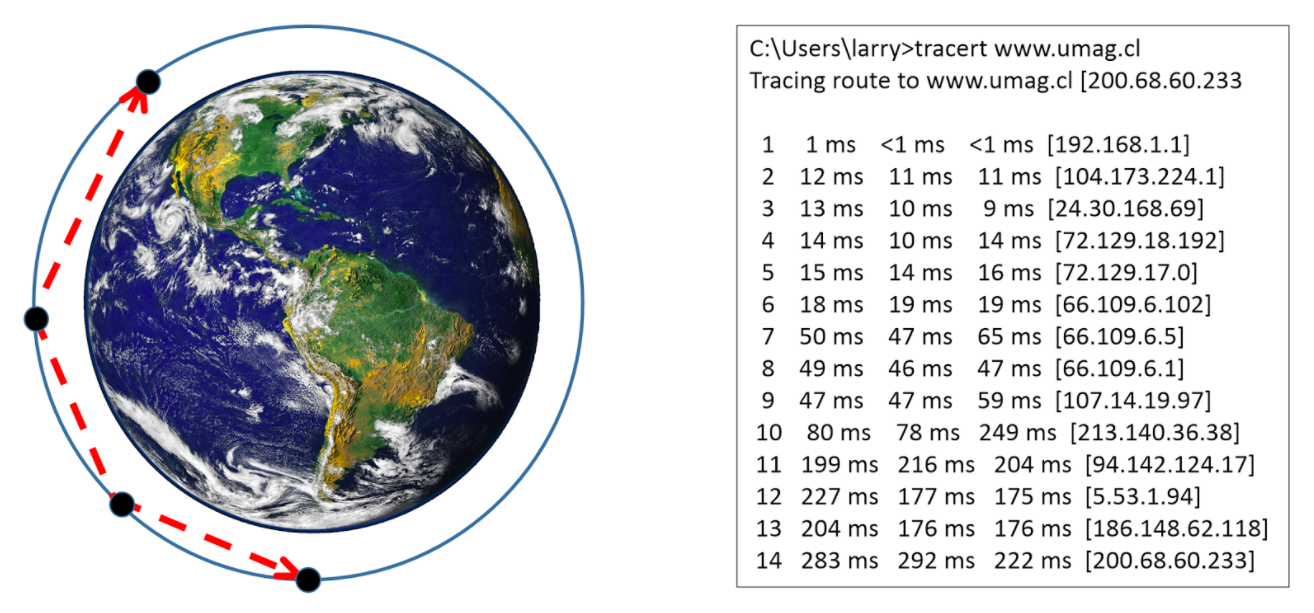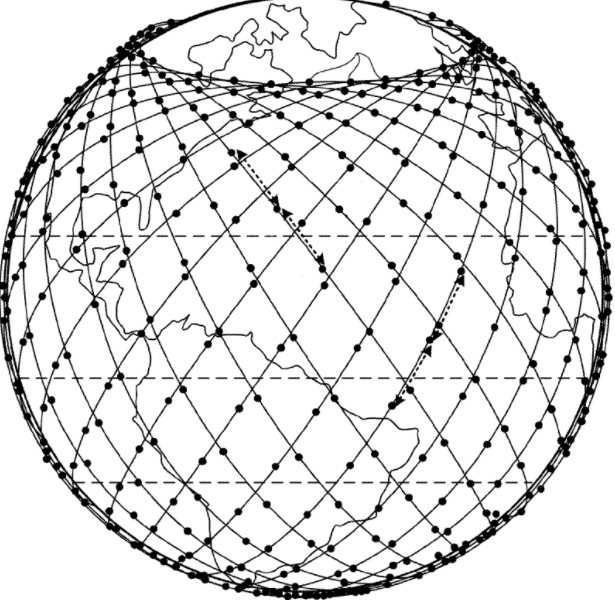aNewDomain — Three companies, SpaceX, OneWeb, and Boeing are working on constellations of low-Earth orbiting (LEO) satellites to provide Internet connectivity.
While all three may be thinking of competing with long, terrestrial cables, SpaceX CEO Elon Musk has said “the goal will be to have the majority of long-distance traffic go over this (satellite) network.”
Can he really pull that off?
Their first constellation will consist of 4,425 satellites operating in 83 orbital planes at altitudes ranging from 1,110 to 1,325 km. They plan to launch a prototype satellite before the end of this year and a second one during the early months of 2018. They will start launching operational satellites in 2019 and will complete the first constellation by 2024.
The satellites will use radios to communicate with ground stations, but links between the satellites will be optical, officials said.
At an altitude of 1,110 kilometers, the distance to the horizon is 3,923 kilometers. That says each satellite will have a line-of-sight view of all other satellites that are within 7,846 kilometers, forming an immense mesh network. Terrestrial networks are not so richly interconnected and cables must zig-zag around continents and islands if undersea and other obstructions if under ground.
Latency in a super-mesh of long, straight-line links should be much lower than with terrestrial cable. Additionally, Musk says the speed of light in a vacuum is 40-50 percent faster than in a cable, cutting latency further.
Let’s look at an example. I traced the route from my home in Los Angeles to the University of Magallanes in Punta Arenas at the southern tip of Chile. As shown here, the terrestrial route was 14 hops and the theoretical satellite link only five hops. (The figure is drawn roughly to scale).

So we have five low-latency links versus 14 higher-latency links. The gap may close somewhat as cable technology improves, but it seems that Musk may be onto something.
Check out the following video of the speech Musk gave at the opening of SpaceX’s Seattle office back in 2015. His comments about the long-distance connections discussed here come at the three-minute mark, but I’d advise you to watch the entire 26-minute speech anyway. Check it out:
Cover image: USPTO.gov.
A version of this article ran on Larry Press’ CIS471 blog. Read it here.











